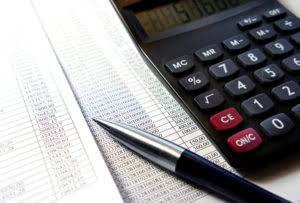
On the other hand, uneven cash flows generate various annual cash streams over a period of time. Due to its ease of use, payback period is a common method used to express return on investments, though it is important to note it does not account for the time value of money. As a result, payback period is best used in conjunction with other metrics. Management will set an acceptable payback period for individual investments based on whether the management is risk averse or risk taking.
- Get instant access to video lessons taught by experienced investment bankers.
- This calculation can help organizations better evaluate the best investments for their businesses.
- The WACC is the function of the weighted average of the cost of equity and the cost of debt.
- Note that in both cases, the calculation is based on cash flows, not accounting net income (which is subject to non-cash adjustments).
- Using the averaging method, you should divide the annualized expected cash inflows into the expected initial expenditure for the asset.
In most cases, this is a pretty good payback period as experts say it can take as much as years for residential homeowners in the United States to break even on their investment. In addition, the potential returns and estimated payback time of alternative projects the company could pursue instead can also be an influential determinant in the decision (i.e. opportunity costs). It is an easy-to-use and understood investment appraisal technique, used in corporate finance, that provides the time period over which an investment will be returned. It has limited practicality in investment decision-making and shouldn’t be used in isolation. Unlike the IRR, the MIRR uses the reinvestment rate for positive cash flows and the financing rate for the initial outflows.
Online Investments
Let’s assume that project A requires an initial capital investment of $500,000 and that every year there is an incremental $50,000 sales benefit. Now, let’s look at project B, which demands $1,000,000 of upfront spending with an annual return of $200,000. Unlike the break-even point, which uses the number of units sold to offset the costs, the payback is the length of time required for an investment to pay back for itself. There are few scenarios, Jones-Albertus and Haenggi agree, when installing solar probably doesn’t make sense, no matter the payback period. If you know your roof will need to be replaced soon, you’ll definitely want to wait until that is done before you install solar panels on top of it.

The total cash flows over the five-year period are projected to be $2,000,000, which is an average of $400,000 per year. When divided into the $1,500,000 original investment, this results in a payback period of 3.75 years. However, the briefest perusal of the projected cash flows payback equation reveals that the flows are heavily weighted toward the far end of the time period, so the results of this calculation cannot be correct. However, since these formulas have more points to take into account, the formula for calculating them is also significantly more complicated.
Is a Higher Payback Period Better Than a Lower Payback Period?
If you had a loan of $10,000 and had a cumulative cash flow of $7,000 by year three and $12,000 by year four, for instance, you know the payback period was some time between years three and four. Cash flow is the inflow and outflow of cash or cash-equivalents of a project, an individual, an organization, or other entities. Positive cash flow that occurs during a period, such as revenue or accounts receivable means an increase in liquid assets. On the other hand, negative cash flow such as the payment for expenses, rent, and taxes indicate a decrease in liquid assets.
